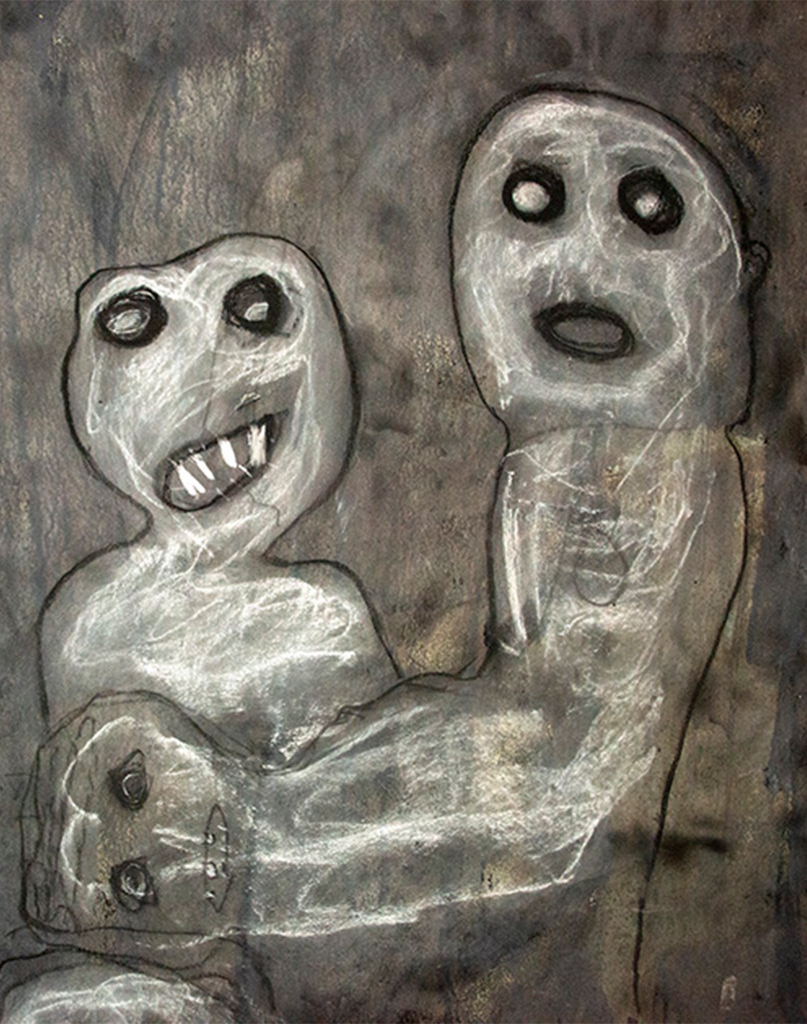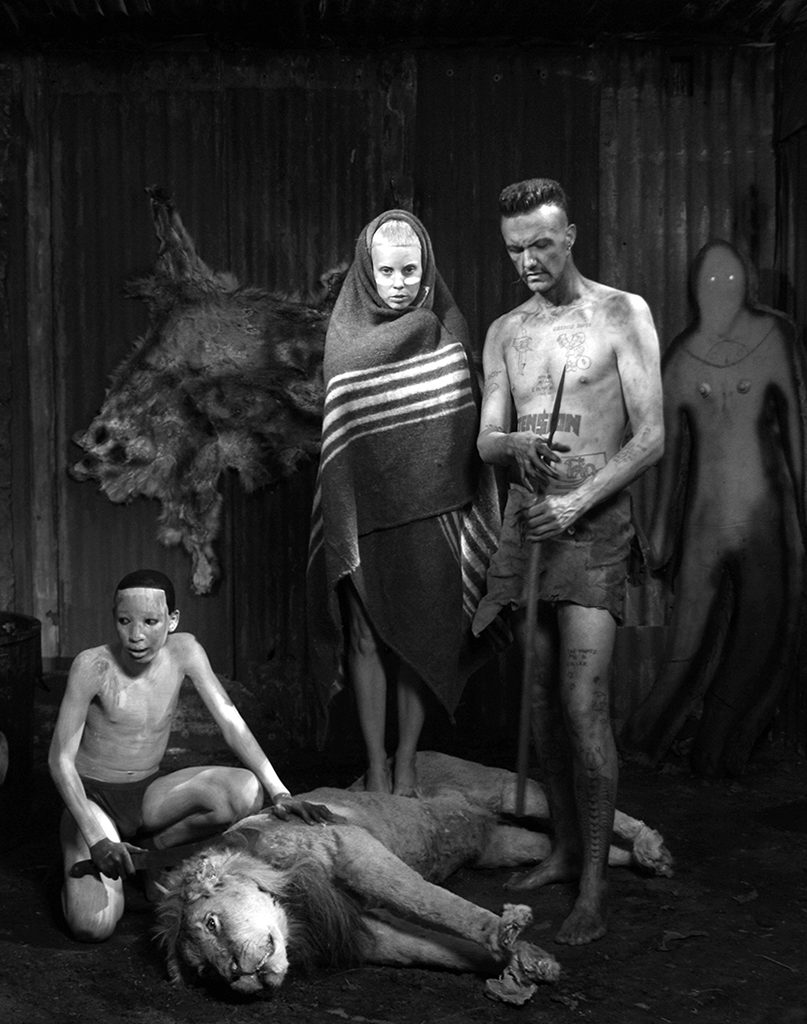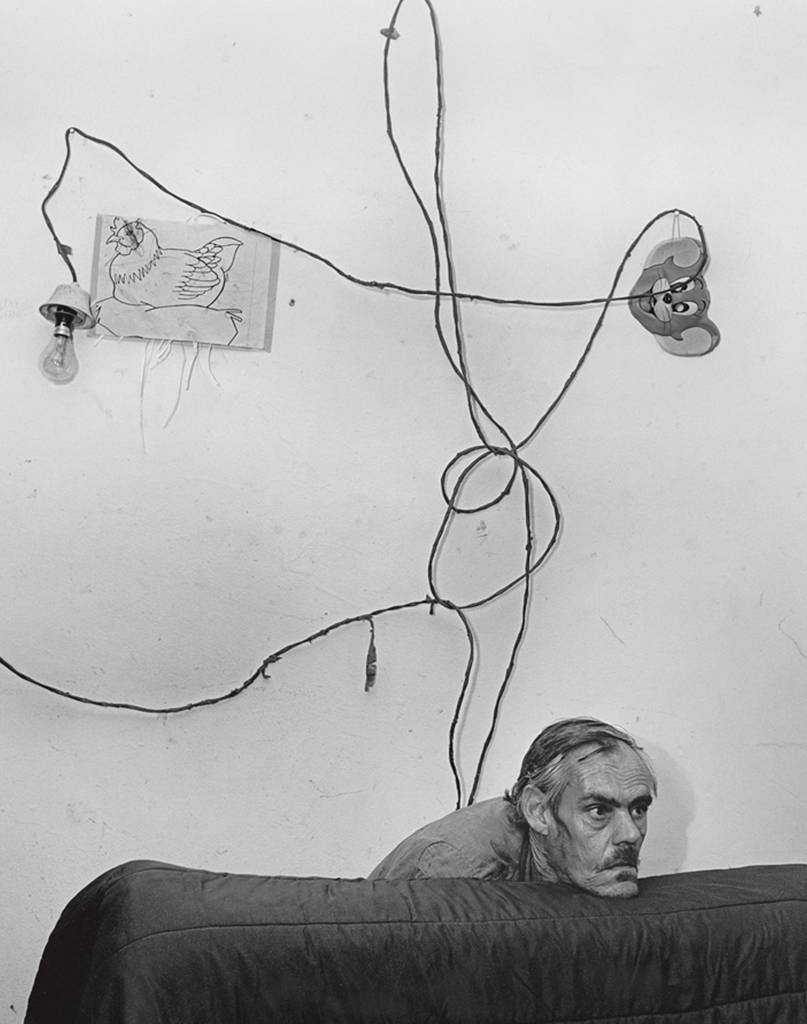
in Sport
Michael Olajide Jr
"I'm a slow burner. I always got stronger as the fight went on."

in Sport
"I'm a slow burner. I always got stronger as the fight went on."

Photographer Roger Ballen’s work reads like a disembodied trance. With a career that spans almost half a century, Ballen has been credited as being one of the most influential and important photographic artists of the 21st century. In an exclusive interview, the photographer illuminates the ideas and inspirations that have led him to explore the darker shadows of the self.


Since the 1970s, Roger Ballen’s images have captured haunting visions of life on the fringe- where fragments of half-formed beings cohabit with shadows and faces peer out like gleeful ghouls suspended in the dark. After moving to South Africa thirty years ago, the New York born photographer achieved international acclaim for his distinctive visual language and creative intellectuality that gave voice to South Africa’s poor and marginalised. Like a requiem for the country’s Afrikaner culture, Ballen’s deeply evocative visions suspend South Africa’s outsiders in a nightmarish fiction that draws a straight path down into a nation’s uneasy unconscious. Exposing “the hidden wound in white South Africa”, Ballen’s profound invocation of the bizarre continues to draw enthusiastic response from around the world. Most notably, Ballen lent his vision to South African Zef hip-hop duo Die Antwoord for the band’s iconic video “ I Fink U Freeky”. Now at nearly 70, Ballen reflects on his artistic vision.
The more people find the work disturbing and the more it scares them, the more it’s challenging their state of being.
Roger Ballen
Roger Ballen: The reason I call my work Ballenesque is because it’s a vision of a world singular to me. It documents the evolution of my photographic vision. I created a particular way of using the camera that is identifiable.
RB: The subjects are not about South Africa, and they’re not about poor white people and crazy people. They reflect something about you, this psychological being. If you look at the people, there’s a lot of chaos around them. They’re absurd. These pictures reflect the things that most people are trying to deal with and have . a hard time trying to resolve. So they actually say something about this subconscious state of mind, that’s why they affect people. They kind of come to terms with their own condition, that’s why the pictures stay in their mind. They’re a mirror to the inner mind, if that makes sense?

RB: Their personality. It comes through in some way that affects me. They’re not people who are watching television or who are only reading books. You know, they experience life. They get out there. I feel like they’re rooted in life. I guess that would be a good way of putting it. They’re rooted in life. I tend to like people who don’t need an education, don’t need to travel- they just represent life, like an animal does, like a tree does, like a bird does. When you’re rooted in life, you don’t have to analyse what a bird is thinking about, what a tree is about. It’s rooted. It’s there. I like those type of people. I don’t feel like I need to ask a lot of questions because the people I work with don’t ask a lot of questions too.
RB: I’ve known some of these people for 25 years already. They’re friends of mine and we work together. I couldn’t have done what I’ve done over the years if there wasn’t trust, or a positive relationship between me and them and them and me. It’s a two-way street. They benefit and I benefit. If only I benefitted then I probably would’ve been murdered in these places. So you know, it has to be a two-way street. I don’t want it to be anything more than that. It has to be friendly. I have to help, they need help. Whether it’s food, books, money to go to the hospital or shoes, I’m happy to help.
RB: I was interested in the psyche and psychology before I studied it, so that was an orientation of mine. I guess it was ingrained into my mindset, and that expanded that orientation. After studying something like psychology, I have a better understanding of the way people’s minds work from a scientific and analytical way. But you know that’s only the beginning. I studied psychology for a few years at Berkeley, but that’s just one notch in my career, you know, one part of the puzzle which has some relevance to what I do later, but I wouldn’t say it was the most key influence.

Article from the issue :
RB: The key influence has been my state of mind- the molecules, the patterns and cells that make up Roger Ballen’s brain. They come to bind together to create who I am, it’s dynamic. Contemporary life likes to say that that everything’s about your experience in your short life on this planet. But a lot has to do with the subconscious mind- biology and genetics and all these things that you can’t put your finger on, you know? But who knows? Who really knows about most of these things?
RB: I think my work should challenge their state of being. I want my work to embed itself in their subconscious mind within microseconds, and make people question. Make them come to terms with their own state of mind and identity. Expose what they bury and what they haven’t buried. The more people find the work disturbing and the more it scares them, the more it’s challenging their state of being. If it really does scare them, it means they’re probably living in some reasonable sub-state of deep repression I guess. Most of the world is living in a state of deep repression. I mean, I’m not the first one to say that. The pictures can open up the personality of an individual to themselves and be a mirror. Hopefully then they can have a more psychologically stable life and that might contribute to a more stable world in some minor, minor way. That’s what I would hope my work does.


RB: I have to tell you the truth. There’s so many people calling them artists these days, that it’s like, the word doesn’t mean anything to me anymore, it’s just another word out there. What do you mean about the role of an artist? Is it somebody calling themselves an artist? Is that artist a better artist, a more valid artist, than someone sitting somewhere in the Highlands of Scotland, who’s never been to a museum and doesn’t even know what the word means? We have to be very careful with these words now, because when we stop looking in deeper ways, we find that a lot of these concepts are influenced by media and economic interest and they blend into nothingness.

It doesn’t matter what I think my role is, I have to be able to implement that role. It’s easy to say that my role is to do this or that. I can say a million things about my role. But I have to go out and do things that hopefully have an impact, but I can’t guarantee that. I just work. I’m not there to try and find words for my work. I’ve commonly stated that if I can define the work in words, it’s probably a bad photograph. 99% of the photographs you see in the world can be defined in words like, ‘happy birthday’, ‘poverty’, ‘ecological disaster’, ‘political turmoil’. But I want to find something honest about the person. Something that they’ve actually experienced in life, some would say in a deeper way. I hate to use words like ‘profound’, but a profound and deeper experience of life. It’s difficult. I have my own opinions, so you ask me what is a true artist, a true artist is someone who follows the lead of their interior mind, they follow their feelings, they follow their emotions, they don’t just follow.
RB: I’m involved in lots of different things. I’m taking pictures on a regular basis, just continuing with my career at aged 68. I’m making coloured pictures for the first time in my career. For the last year or so, I’ve moved from black and white to colour photography. I’ve been absolutely amazed, to be honest with you, by how good the pictures are. I never had any interest in colour before. Just by chance, Leica camera gave me one of their cameras and I started taking coloured pictures. So I have made a big step into another zone I never thought I would, ever. It just happened by chance. The other thing I’m doing on a regular basis is creating, making installations. I’m building rooms and houses, these so-called 3D Ballenesque spaces that are openly linked in some aesthetic way to my photos and videos. They feel like the same place that the pictures came out of, but as physical spaces. I’m also making videos, and next month, I’m the creative director for Die Antwoord in a feature film next month.
I feel very privileged. I’m so involved with what I’m doing and learning everyday more about what I’m doing and what I am inspired by. If you’re not inspired by what you’re doing, then you won’t be able to produce very good work. People are always looking for things to be inspired by, but you really have to be inspired by your own work. If you’re not inspired by your own work then you’re really not a true artist.
Roger Ballen is an American artist and photographer working and living in Johannesburg, South Africa. His body of work, developed over a period of four decades, began in the documentary field but his approach has widened to become a visual dialogue between his work and viewers. His books Ballenesque and Roger Ballen a Retrospective are now available for purchase.
Follow Roger:
Website: www.rogerballen.com
Instagram: @rogerballen